Chapter Books For Early Readers Demystified
Author: utbt19 Jul 2010
Picture books are an essential component to developing early literacy skills. One might come up with numerous adult oriented reasonings, beyond that picture books are pure fun. How else a child, who by nature is an active participant in the learning process, sits down and listens to something read to her? The illustrations in the picture books play a key role bridging the gap and provide the sensory input that rivets the child to the book.
But like everything one thing evolves in to another. Picture books eventually give way to chapter books. To ease the transition from understanding with aid to following the subject content by creating mental pictures, there are several easy reader books.
These easy readers books are classified in to different levels. In general I do not go by the age recommendation for each level. Combining age and the skill level only puts unfair pressure on the child.
Over time I see some patterns developing at home. I see strong likes in each of the above levels.
Just wanted to make a list of the books we read at home.
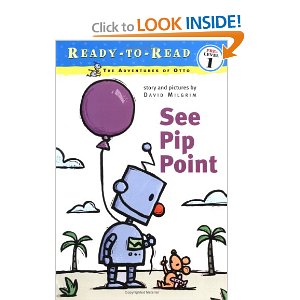 |
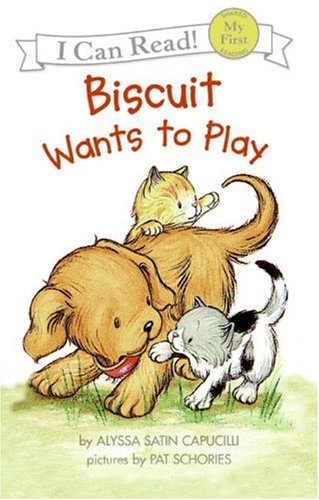 |
 |
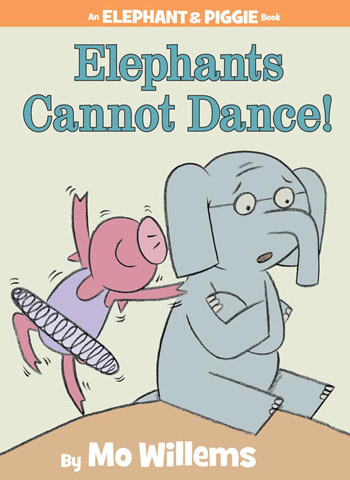 |
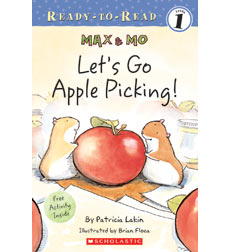 |
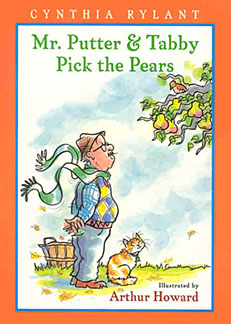 |
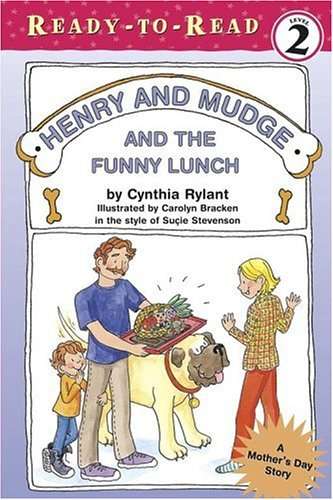 |
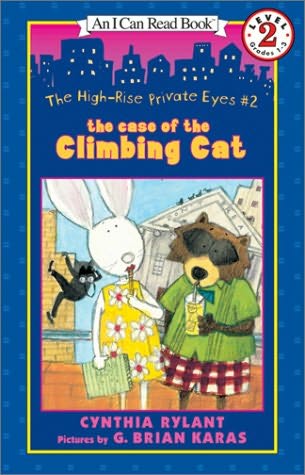 |
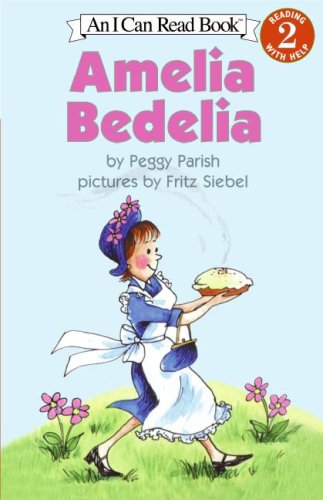 |
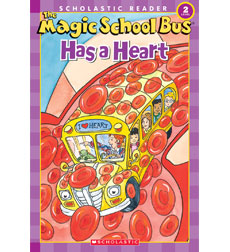 |
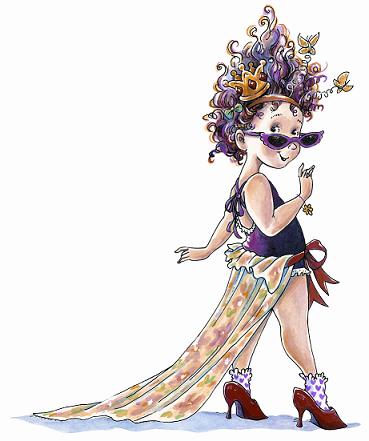 |
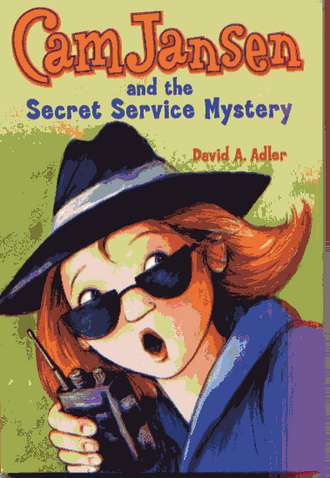 |
 |
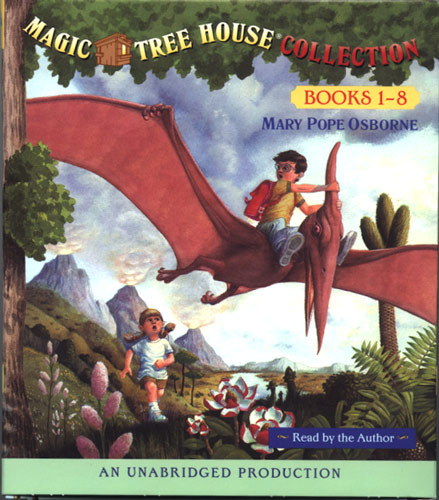 |
 |
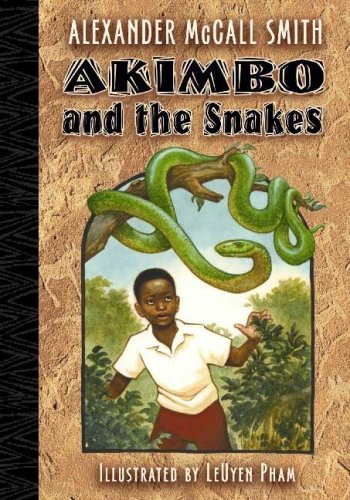 |
(1)Sometimes called pre-level as in for pre-readers. The author still relies largely on pictures. Many a times there is no story. The focus is on words. Select keywords are repeated again and again throughout the few pages of the book, supported with pictures. The sentences with keywords are simple, basic three word or two word sentences. The idea is to help the child understand the keyword, train the child to familiarize the keyword, reinforce the keyword with pictures. All this leads to the child recognizing the word, written or spoken, stand alone or in a different context.
See Pip Point series (by David Milgrim) in which the protagonists are Pip the mouse and his friend, Otto the robot. Names Pip and Otto are repeated in almost every sentence in the book. The names being phonetic are easy to read. The rest of the words are mostly sight words like ‘the’, ‘there’, ‘you’ with few rhymes like see-bee, few action words and couple of new words thrown in.
Biscuit series (by Alyssa Satin Capucilli, illlustrations by Pat Schories). The main character is an adorable puppy named Biscuit. Some pages do not have any print on them, just the pictures and the illustrations are tell-tale of what is happening in every page. “we can feed the hens Biscuit” is illustrated by the puppy’s owner, a small girl feeding the hens. Every book has a theme, a farm theme, where all animals are introduced. A school theme which talks about school and so on.
Mittens series (by Lola M. Schaefer, illustrations by Susan Kathleen Hartung). Where there is a puppy, there is a kitten and it attracts young readers all the same. The author picks a noun and verb, example a butterfly flying, and introduces prepositions that are associated with the noun and verb, example ‘the butterfly flew up’, ‘Mitten ran under the bridge’, ‘butterfly landed on a flower’ etc.
Elephant and Piggies series (by Mo Willems). Why leave pigs and elephants? This is least of MY favorites, but the young readers do not mind. Well it is MY blog and here is My honest opinion. The piggie is over hyper, unrealistic reminds me of Kareena Kapoor in Jab we met. The elephant is over sensitive and super stressed, reminds me of Nicolas Cage with his standard constipated look. These books are not your typical 15-20 page three word sentences. It is 50+ pages of a pig who wants to fly and keeps going Fly! Fly! Fly! Yes! Yes! Yes! Fly! Fly! Fly! and the elephant going No! No! No! You jumped! You can’t fly! Yes, every other word ends with exclamation. But as I said the girls seem to enjoy it. Chula can read, Mieja reads from memory, I don’t have to read it to them. Good.
(2)Pictures are still a bigger part of the book. There is a very simple story that can be summed up by an adult in one or two sentences. There are slightly larger sentences and lesser keyword repetition. The prime objective is to make sure that the child follows the story line.
Max And Mo series (by Patricia Lakin, Illustrated by Brian Floca) is about two hamsters(I think, may be they are some other kind of rodent pets) who live in a school in a cage. The series is about the adventures of Max and Mo. One we particularly enjoyed at home is MAX AND MO GO APPLE PICKING. After getting tired of being fed corn, Max and Mo escape their cage and have fun with the apples they find in the school.
(3)This is a flavor of what an young reader will experience in the future. There are chapters and each chapter is representative of introduction, plot and an ending. There is an index to every chapter. There are not just sentences, but paragraphs.
Mr.Putter and Tabby series (by Cynthia Rylant, illustrations by Arthur Howard) Mr.Putter is a senior citizen who lives in a neighborhood with other senior citizens. Mr.Putter finds in Tabby a companion. The stories are not just about the aches and ailments of being old and living alone, but are tasteful snippets in to the lives of old people, that evoke a myriad of feelings and makes the young readers wanting for more.
Also by Cynthia Rylant, illustrated by Sucie Stevenson are the Henry and Mudge series and easy read about a young boy Henry, his 180 pound dog Mudge and the adventures they share.
Cynthia Rylant (illustrated by G.Brian Karas) also has the High Rise Private Eyes series, about a boy and girl detective pair. For some reason, I found the pair to be sassy. We read about a couple of books and did not take much to the private eyes.
Amelia Bedelia (by Peggy Parish, illustrated by Lynn Sweat). Amelia Bedelia can be easily equated to our good old Suppandi. Amelia Bedelia is maid who manages to mess up every instruction given by her employers. If you tell Ameila Bedelia to clear the weeds in the garden, you must tell her ‘Unweed the garden’, for if you tell her just ‘weed the garden’, she would bring more weeds from your neighbor’s garden and lay it around in your garden. But in the end, she wins over her employers with her awesome teacakes and mouth watering cookies. She is quite a character.
Magic School Bus series by Scholastic. The level 2 books are the ones I find appropriate for the 4-6 year old age group. Mrs.Frizzle, the teacher takes her class on a ride in the magic school bus. They can travel to the past, the future, in to the human body and in to outer space and the children learn first hand how circulation works, about the dinosaurs, how snow is made etc.
Fancy Nancy series (by Jane O’ Connor, illustrated by Robin Preiss Glasner) The girls go ga-ga over Fancy Nancy may be because the protagonist is a girl. Or may be because, true to her name, Fancy Nancy is very fancy. Nancy is the fashion diva born to two plain parents. She has a chic BFF, a teacher who is always in vogue and a neighbor who can give models a run for their money, but her own parents and her sibling are so simple that they don’t even ask for sprinkles on their plain vanilla ice cream. The adventures of Nancy are about a variety of subjects like Nancy getting over her jealousy and sharing her best friend with another girl, trouble writing a book report etc. I like the fact that Fancy Nancy is always introducing new words.
“… we shout in unison. (That’s a fancy word for all together.)”
“…That makes me unique.(You say it like this: you-NEEK.)”
Young Cam Jansen series (by David.A. Adler, illustrated by Susanna Natti). Jeniffer, has a photographic memory and is nicknamed Cam, short for camera. She solves mysteries with her friends and is good at it because of her photographic memory. At thirty pages, it makes a good light read. For the young boys, David A.Adler also has the Bones series in which boy detective Bones is in charge.
There are many more like Poppleton the pig, Amanda Pig, Charlie and Lola, Nate the grate, Dick and Jane etc that we have read on and off.
(4) This is a complex form of the previous level. The shift from pictures to the written word is explicit. Rainbow Fairies, Cam Jansen, Akimbo series by Alexander McCall Smith, books by Roald Dahl and The Magic Tree house are some examples. So far, I read these books, few chapters at a time during bed time and the girls listen.
Happy reading young readers.

 (No Ratings Yet)
(No Ratings Yet)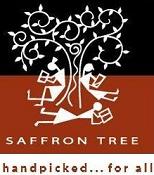
10 Responses for "Chapter Books For Early Readers Demystified"
Excellent compilation. Put it up on ST!
My own experience has been different – I haven’t ever read chapter books to my older kid. She simply picked one up one fine day and read it. Remember that one even though that was a few thousand books ago 🙂
UTBT SAYS: Thanks Chox. Some things one never forgets huh?! I am sure I will remember my older one read a word all by herself 🙂
I love the way you have assessed each type of book. Amelia Bedelia is a particular favourite, and one owns all of her books available. Read and re-read by A with helpless laughter.
A has been reading chapter books by herself for a long time now-“a thousand books ago” as Chox puts it, but I still try to kill two birds with one stone by reading to her those which are slightly beyond her. She is challenged, and we enjoy some quality mother-daughter time. We are reading the Harry Potter series together currently. Serves my addiction too.:)
Seconding putting it up on ST.
UTBT SAYS: Thanks Sandhya. I wasn’t comfortable with the Disney princess early readers. I preferred non-name brand chapter books, unfortunately it ended up being non-disney brand chapter books. In a way it is okay. Cos I look at the author’s name or the character’s name, I know what to expect for. I had unsettling experiences with some books.
[…] This post was mentioned on Twitter by utbtkids, J.H. Everett. J.H. Everett said: Chapter Books For Early Readers Demystified http://bit.ly/b1WANv […]
Nice compilation – doubly thrilled since Bunnu & I have only read the Biscuit series from the list you’ve mentioned – so near-total XOR with the books that we are familiar with
On another note – totally disappointed with the “Bob” books – completely over-hyped series. Prefer Dunrea and Boynton any day over these !
UTBT SAYS: We haven’t read any BOB books. Boynton is great. “with a baa-baa and a moo-moo and a cocka-doodle-doo, ebvery body march two by two.” Foot tapping, finger snapping fun.
With you re Disney princesses. We dont have any – books or merchandise in these parts. I hate them with a passion and my girls are indifferent to the whole idea.
UTBT SAYS: 🙂
Excellent compilation,loved them all.
Will have to get my hands on these books soon.
UTBT SAYS: Thanks.
Nice list … thanks for this post !!
Regarding Disney Princess …. I hate them myself … didn’t acquire / possess any merchandise / books until Cantaloupe was 3. But got a few of those as Return gifts in other parties … and Cantaloupe took a liking to them … couldn’t come up with convincing ideas to give them up. Now Cantaloupe reads them … but I try to avoid them as much possible … sometimes my attempts are futile.
One of the many reasoning for my dislike … all disney princesses seem too obsessed with “External Beauty” and almost all stories ends with a prince charming marrying the said princess.
UTBT SAYS: CA, I agree. It is hard esp if your children like it. Mine like it, so we compromising on reading in the library and leaving the books there. The school supports us big time with their no characters rule. But if my kids see their friends sporting disney stuff left, right and center, it will be increasingly difficult for me to implement the no-disney rule at home.
Excellent post. With so many suggestions, i need not use Google…you ST guys are one stop info for we mothers encouraging our kids to read!!
UTBT SAYS: Thanks Lavs.
Utbtkids…
[…] something about utbtkids[…]…
Hi Utbt,
Thanks for the list and thank you for demystifying the way the kids learn to read. My 2.5 year old is very fond of books. I see that Amar Chitra Katha’s are absent in this list. Is it by chance or design?
UTBT SAYS: By design Uma. ACK kind of graphic books don’t exactly aid the ‘learning to read’ process. It confuses beginners.
Leave a reply